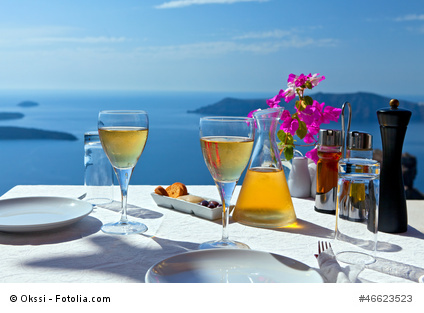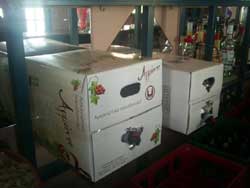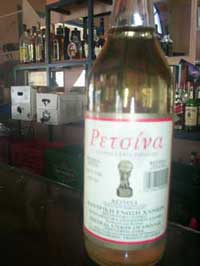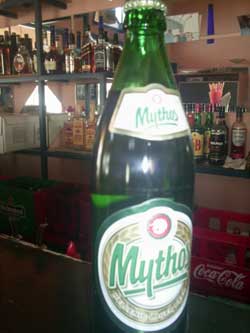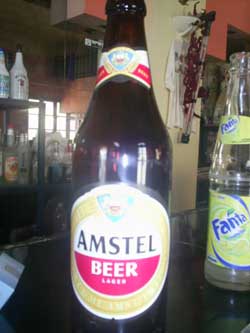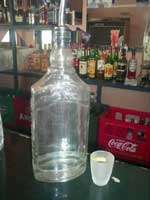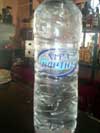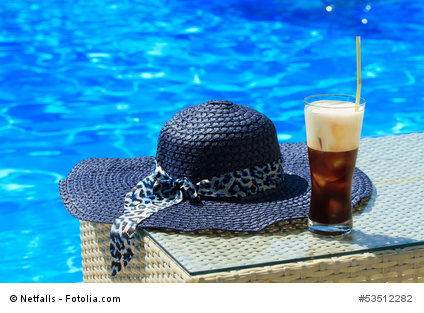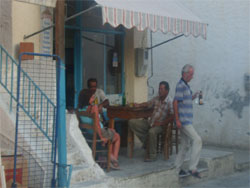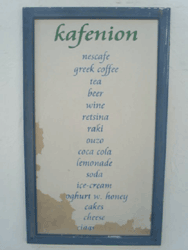|
Drinks on Crete |
|||||||
|
|
Cretan Wine
There is a lot of wine grown and drunk in Crete. Whilst itís not going to win any international awards, it is perfectly pleasant to drink. If you order the house wine, youíre guaranteed a cheap, pleasant drink.
In a simple taverna, you can get a glass for Ä1, half a litre for Ä2-3, and a litre for around Ä5. Quirkily, the Greeks refer to litres as Ďkilosí. Should you order a kilo or so of wine, itíll arrive in a metal carafe and as many glasses as people on your table. In more rural settings, you may be offered wine that the taverna owner has made himself; he will be extremely proud of it, and it is inadvisable to say anything negative about it. Red wine is on the whole more popular than white.
Thereís also Retsina, a special wine matured in pine casks. Some like it, others dislike it for its strong and unique taste (like me). It is certainly an acquired taste. Beer
Greeks are starting to drink more beer than they used to. It usually comes in 500ml bottles, which cost Ä2-2.50 in most bars and restaurants. Most places stock two or three brands, mostly Mythos, Amstel and Heineken. German beers and (canned)Guinness is starting to come on the scene. For a quick, cheap beer though, your best bet is a Mythos or an Amstel.
Raki (Tsikoudia)
Raki is the national drink of Crete (and Naxos), as opposed to the mainland, where ouzo is drunk. Itís a spirit created from the distilled leftovers of wine-production. Itís also a bloody cheap drink, at the average price of 50 cents. Hardened drinkers can order a carafe or bottle of raki, though I do not recommend this Ė raki has a strong alcoholic content of 45-55%.
Non-alcoholic Drinks Soft Drinks You can buy Coca Cola and Pepsi anywhere, plus the other brand name drinks. I better recommend the local alternatives, which are cheaper and tastier for many. "Gerani" is a great lemonade. You can get it in many supermarkets on Crete but not often in bars or coffee shops. Water
Tap water is mostly safe to drink on Crete, and many Cretans drink from the tap. If it is spring water often tastes really good. In autumn, after the usual dry summer, the quality of the tap water can be lower in same areas of the island. Just ask the locals.
In the dry East of Crete the tap water has in same regions a salty taste which renders it undrinkable. You can buy cheap bottled water everywhere. A big bottle (1.5l) is rarely more than 60 cents. Good brands from the island are Zaros and Samaria. The water from Zaros was elected by an organisation to "the best water of the world" in the beginning of the ywar 2017. Coffee and Tea
Greek coffee is a small, potent drink. You can order it gliko (sweet; two spoons of sugar), metrio (one spoon of sugar) or sketo (without sugar). Nescafe, is also very popular Ė you may hear it referred to as Ďnesí. Filter coffee is available in all tourist areas, and is called galiko kafe (French coffee). In summer Cretans drink their coffee more often cold than warm (ice coffee). The most popular version is called Frape (see picture). In many bars almost every greek customer orders a Frape. Another type of cold coffee is called Freddo. Both you can order with or without sugar and / or milk. You can get tea everywhere, usually Liptonís brand. Better recommended is to try mountain tea, which is made of herbs growing high up in the Cretan mountains; itís very healthy, and contains a herb, dittany, that grows only on Crete. Many english people living in Greece bring their own tea from England. Kafenio
Kafenios have a long history and tradition in Cretan history,
providing a meeting point for generations of Cretan men. Sadly they are a dying
species with the continuing westernisation of Crete. Former bastions of
masculinity, they only started to allow women in a few years ago (although
foreign women are exempt from such rules), though in the remote areas women
still donít go into them. Theyíre simple affairs, serving wine, beer, raki and
coffee which are usually accompanied with a small plate of food, which is
usually free.
Kafenios are mostly frequented by elderly and friendly people, who will try to
strike up a conversation with you. Often youíll find someone speaks English,
thanks to a sojourn in the USA, Britain or Australia. |
||||||
